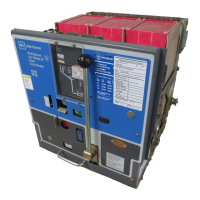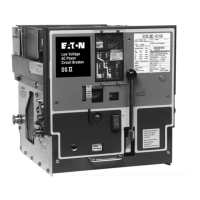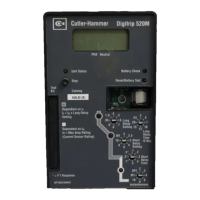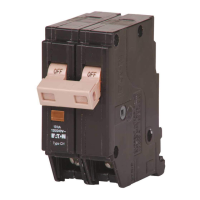1.8. 33-790-11
Page 5
Recommended Safety Practices
Type
OS
circuit breakers are complex electrical devices
containing high speed, high energy, operating mecha-
nisms. They are designed to operate within the current
and voltage limitations on the breaker nameplate. Do not
apply these breakers to systems with currents and/or
voltages exceeding these limits.
1.
To perform work on Type
OS
Circuit Breakers
requires personnel with training and experience
in
high voltage circuits. Only qualified electrical work-
ers, familiar with the construction and operation
of
such equipment and the hazards involved, should be
permitted to work
on
these circuit breakers.
2.
Only Qualified Persons as defined
in
the National
Electric Safety Code should be permitted to assem-
ble, operate
or
maintain these breakers.
3.
The breakers are equipped with various interlocks.
DO NOT MAKE ANY OF THE INTERLOCKS INOP-
ERATIVE AS THIS MAY RESULT
IN
BODILY
INJURY OR PROPERTY DAMAGE.
4.
Never put a breaker into a cell without barriers and
arc chutes.
5.
Always be sure that all switch hardware is
in
place
and bolted tightly before inserting breaker into cell.
6.
Do not lift breaker with ordinary crane hooks, ropes,
chains, etc., to avoid possible damage to parts
or
dropping the unit. Use breaker lifting adapter.
Effective October 1998
7.
Use handle on front panel
of
circuit breaker to move
it into
or
out
of
cell. Keep fingers and hands off top,
bottom
or
sides
of
breaker when moving it into
or
out
of
cell to prevent bodily injury.
8.
When operating breaker without arc chutes and bar-
riers, keep hands, arms, head and tools out
of
area
where contacts travel. Severe bodily injury could
result from being struck by the moving contacts
either as they open
or
close.
9.
Be
sure circuit breaker contacts are open and closing
springs are discharged before doing maintenance
work.
10.
Be
sure circuit breaker contacts are open and closing
springs are discharged after completing maintenance
work.
11. Never leave breaker
in
an intermediate position
in
a
cell. Always have the breaker either
in
the discon-
nect, test
or
connected position because control cir-
cuits may be either improperly connected (or
disconnected) and may cause electrical failures.
12. Avoid trip-free type operation because it causes
more shock on some parts
of
breaker than normal
closing operations. Refer to last paragraph
in
Item 4.1.
13. Before operating breaker
in
test position, be sure that
closing the breaker will not cause another electrically
interlocked breaker to inadvertently trip.
Courtesy of NationalSwitchgear.com

